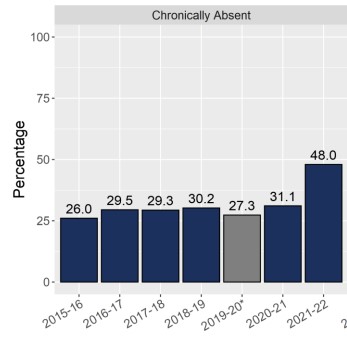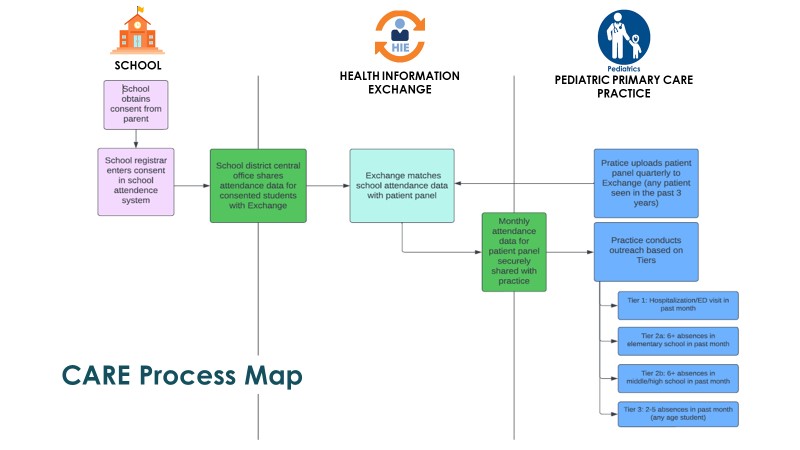Health Equity/Social Determinants of Health
Health Equity/Social Determinants of Health 9
575 - A Pilot Program to Identify Health and Educational Inequities Through the Integration of School Attendance Data into a Pediatric Practice
Publication Number: 575.413
.jpg)
Jaytoya Manget, DNP, MPH, FNP
Assistant Professor of Pediatrics
The George Washington University School of Medicine and Health Sciences
Laurel, Maryland, United States
Presenting Author(s)
Background:
Educational achievement is a social determinant of health, dependent on school attendance and linked to long-term health and economic outcomes for children. Chronic absenteeism, defined as missing 10% or more of a school year, is increasing. During the 2021-2022 school year, 48% of students in DC were chronically absent (Figure 1). This is a health equity issue, that disproportionately impacts children of color, children with disabilities, children in low-income communities and children with public insurance.
Objective: This pilot program integrated school attendance data into a pediatric practice to assess attendance trends for participating schools in Washington, DC. With the use of attendance data, the practice conducted outreach to families to connect them to medical and social resources as needed and mitigate future absences that may lead to a student becoming chronically absent.
Design/Methods:
An electronic health information exchange (CRISP) was used to share attendance data between 6 schools (4 elementary, 2 middle/high schools) and an academic pediatric practice. A FERPA-compliant, opt-in, data-sharing consent was distributed at the schools during the annual enrollment process. CRISP used an algorithm to match consented students with the practice panel and sent school attendance, hospitalization and emergency department visit data to the practice each month (Figure 2). Staff conducted outreach based on tiered need to families. Medical, behavioral, and social needs of families were assessed during the outreach.
Results: Between September 2021 and June 2022, 149 unique students were identified as having 2+ absences at least one month, representing 91% of the enrolled panel. 27% of the 149 students met the definition for chronic absenteeism in the school year. More than 95% of the chronically absent students were publicly insured. >1,300 minutes was spent on outreach resulting in 26 appointments scheduled and/or referrals for SDOH services.
Conclusion(s): There is an urgent need for academic support for children due to the high percentage of students meeting the definition of chronic absenteeism in DC. Using CRISP for patient-level absenteeism data sharing is a viable option between schools and pediatric practices and can identify children at-risk for chronic absenteeism to prevent furthering of inequities. Conducting outreach in programs such as this pilot helps with identification of social and medical needs that influence school attendance. 

